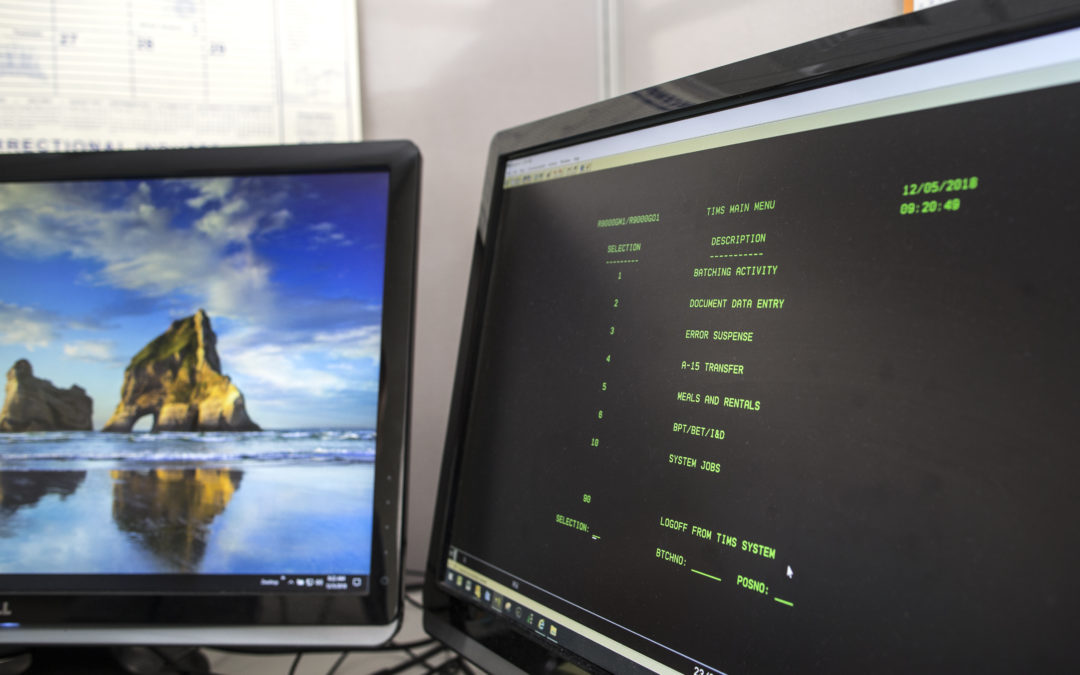UPDATE: The original headline said “State government needs you” for COBOL programmers, which grossly overstates the case. I heard from a couple COBOL-wise job seekers, including one from Brazil, so I’ve tweaked it.
It’s pretty easy to see why the state’s tax collectors think they’re long overdue to get a software update. Just peer over somebody’s shoulder as they work.
“Yes, it has a blinking green cursor – green text on a black background,” said Lindsey Stepp, commissioner of the Department of Revenue Administration.
If that sounds like a computer from the “War Games” movie, there’s a good reason: That’s when the state’s system for collecting taxes from businesses and investments was created.
Stepp said the system was built by the state in the 1980’s using COBOL, one of the oldest of all computer languages.
“We’re having trouble at this point recruiting people who are familiar with COBOL to keep the system running,” she said.
This will change over the next three years as the DRA rolls out a $29.5 million upgrade, starting with the meals and rooms tax next year, following the business tax and the interest-and-dividends tax in 2020, and then miscellaneous taxes (did you know the state has a gravel tax?) in 2021.
Property taxes are handled by the individual communities. The state’s role helping to organize them and calculate rates is handled by a different, and newer, system.
“We’re really excited, finally coming into the 21st century,” said Lisa Crowley, project director for overseeing the installation of what is known as RIMS, or Revenue Information Management System.
“We have taxpayers who call in; it’s a point of frustration for them. They can’t see their account, they can’t updates. … When they call our employees, our employees are limited by a 30-year-0ld system. It’s very inefficient,” she said.
Stepp agreed: “Right now, if you want to know what your second quarter estimated tax is, you have to call us and ask for that information. It takes a while.”
Once RIMS is up and running, she said, clients can create logins and check their status, file returns, make payments, and give customized control to tax preparers if they wish.
Lots of people will be doing this. According to the DRA, about 8,000 businesses pay meals and rooms tax in New Hampshire, about 75,000 pay business tax, and roughly 60,000 pay interest and dividend tax. RIMS will also handle taxes on sales of real estate, which affects many thousands of people each year.
The new system should make it easier for DRA to work, freeing up employees to do more useful things, Stepp said. It will also spot errors more quickly.
“For example, if one time you file with the federal ID and next time with your Social Security number, the current system posts those to two different places. Often the taxpayer will have to reach out because they received a notice of noncompliance, and manually have to go in and perform that maintenance, combine the filings,” she said.
The state also hopes that making it easier to file will make it more likely that businesses and investors will pay their on time, improving collectings. RIMS or similar systems are used in many states, including Vermont and Massachusetts.
One thing RIMS won’t have which is common in many business portals is a real-time online chat feature. That’s a deliberate choice, said Crowley.
“That’s something we thought about but it’s not relly conducive in an environment where you’re dealing with sensitive information. We decided we’d rather have secure messaging within the portal,” she said.
The upgrade was approved by the state legislature in 2016 after years of discussion. The contract approved by the Executive Council covers three years of installation and four years of maintenance.
RIMS is being developed by a company called Fast Enterprises, a Colorado software firm that won the bid and was approved by the Executive Council on Oct. 31. Some 20 to 30 employees are likely to be in the DRA office in the Hugh Gallen State Office Park as part of the installation.


 Return to the Concord Monitor
Return to the Concord Monitor
Nice to read it. I’m a cobol programmer and I live in Brazil. It’s very hard to find a Cobol job abroad, but reading some articles I see a lot of opportunities for Cobol programmers.
Hi,
I am a Cobol, Cics and Db2 programmer for 16 years in Mainframe and Unix environments.
I am a COBOL programmer worked in Mainframe DOS/VSE, PC DOS (MF COBOL) and HPUX Mini UNIX environments.
They won’t need COBOL developer to keep maintaining that system, the Fast Enterprises system is being installed around the world, in places like Finland, New Zealand and in various states.
All the “improvements” could have been done to the existing system including a web interface – and for less than $30,000,000 – a lot less. Now you don’t own the source code and are at the mercy of an individual of a single company who if dissolves, will leave your system orphaned. Strategically – a very poor move indeed.